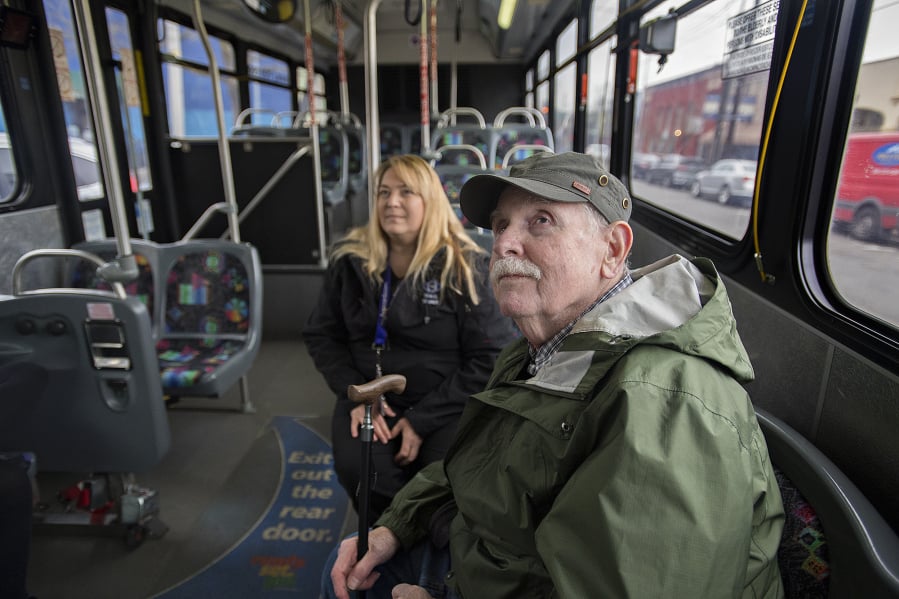John Prince and his wife moved from Northern California to Vancouver, just north of downtown, about six months ago. The 75-year-old researched the area beforehand and wasn’t sure he’d be able to get around without a car. A retired real estate agent who primarily sold ranches, he’d spent his whole life driving on freeways and rural roads.
Veronica Marti, lead travel trainer with C-Tran, showed Prince how to use public transit to get to his medical appointments at Oregon Health & Science University in downtown Portland, and now, she says, he’s an expert.
“It’s so inexpensive to ride, I wouldn’t think of doing anything else,” Prince said.
A regional all-day pass is $2.50 for seniors or people with disabilities.
Prince said he tries to go somewhere every day, typically plotting his route on Google Maps. Some routes are trickier than others, and he doesn’t like crossing busy Mill Plain Boulevard to reach the bus stop by his house.




